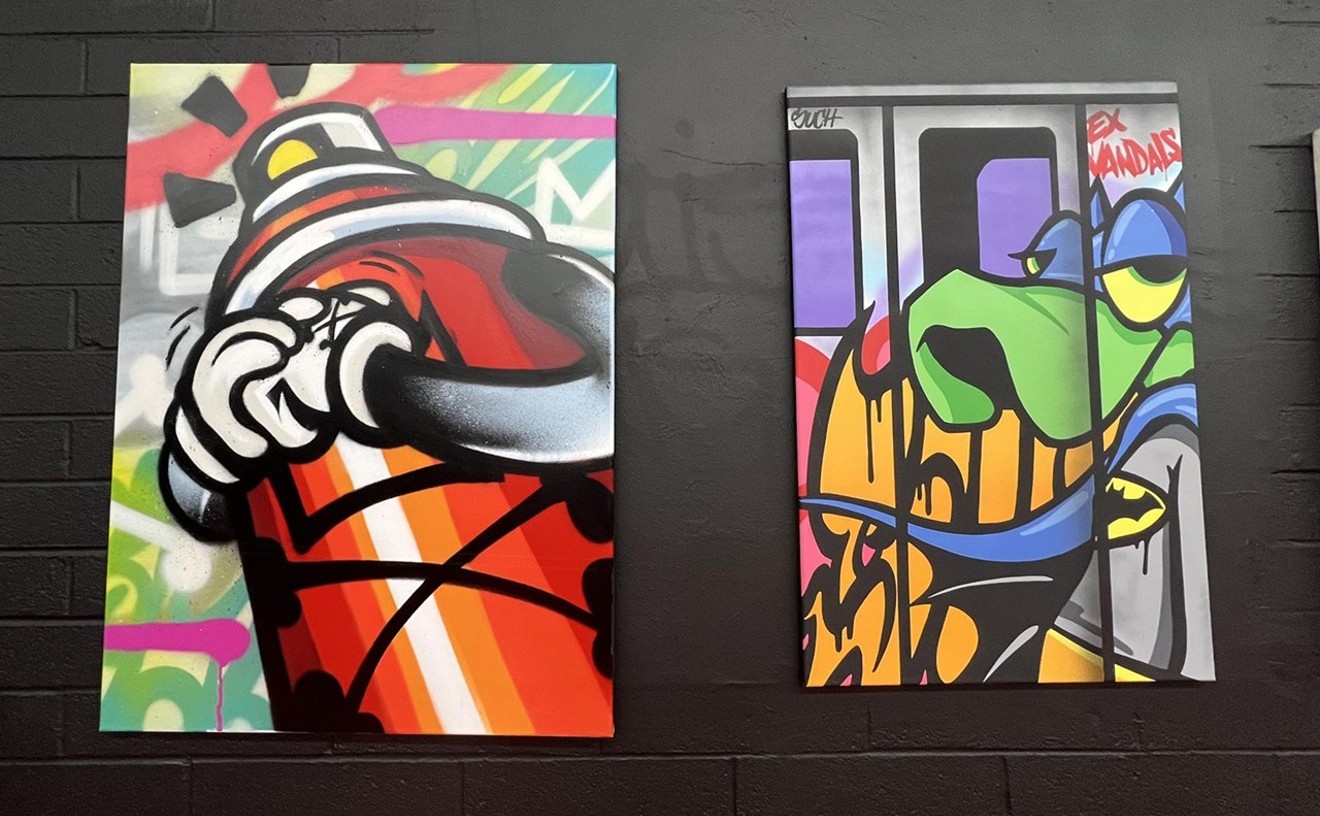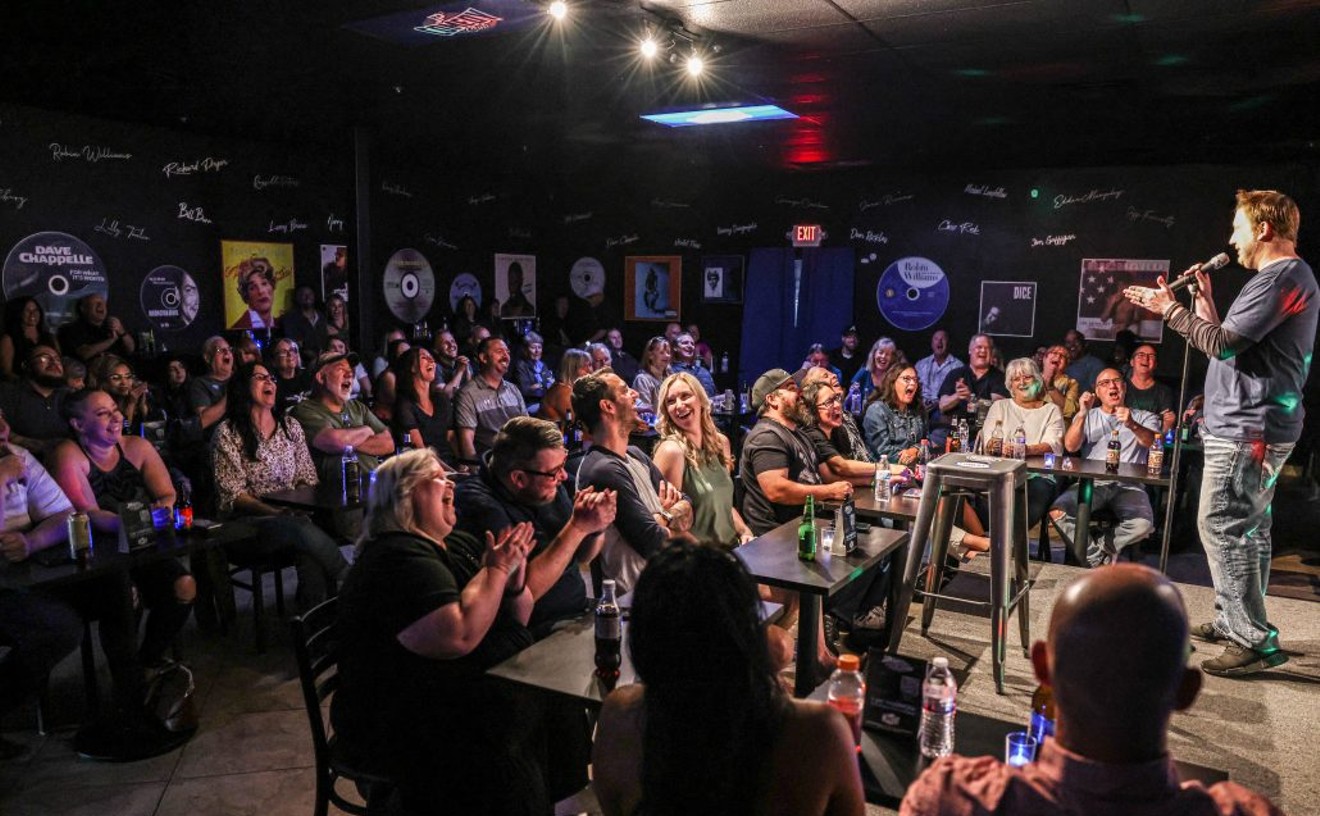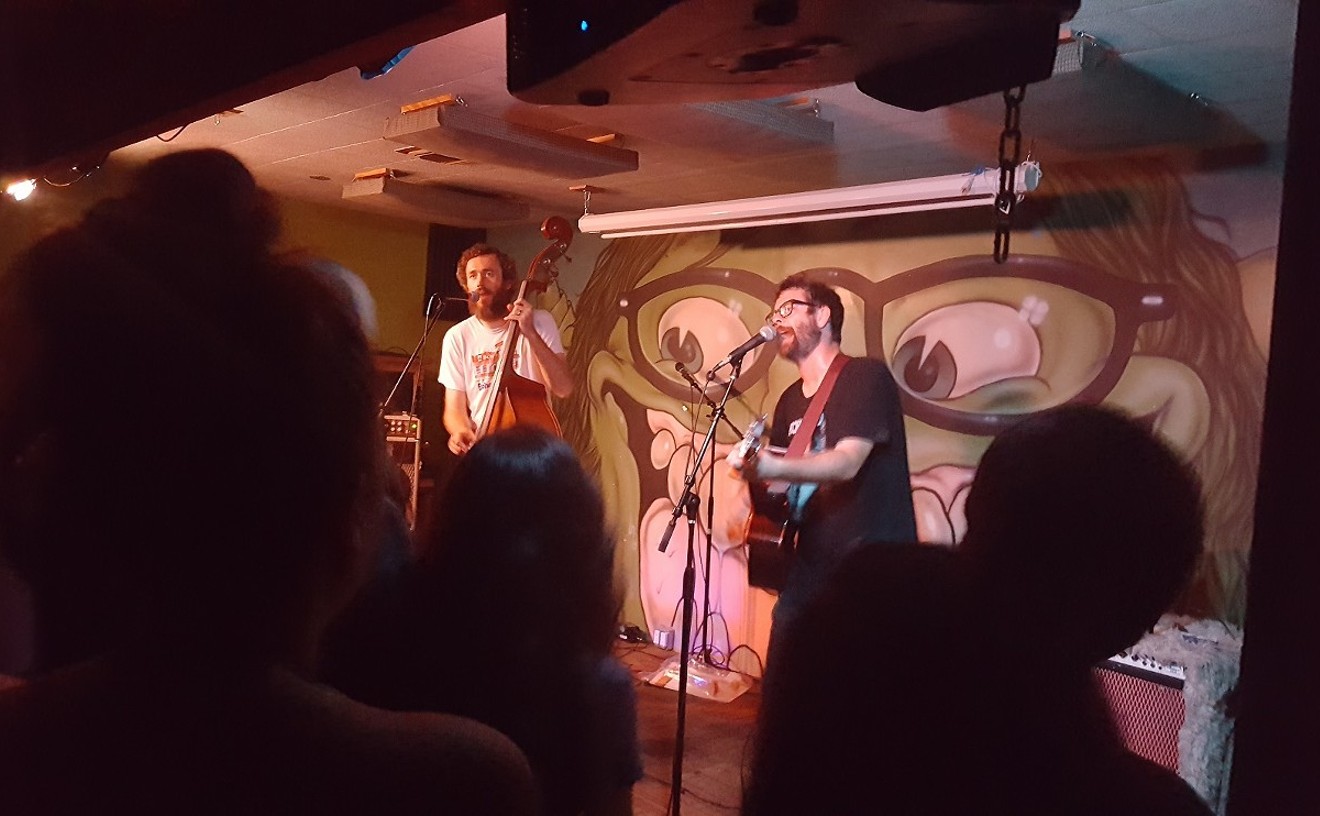After closing R. Pela Contemporary Art gallery in Phoenix during the summer of 2015, Robrt Pela has decided to forgo the brick-and-mortar gallery model in favor of presenting exhibitions in non-traditional spaces for 2016.
Starting in January 2016, you’ll find exhibitions presented by R. Pela Contemporary Art at Central Arts Plaza. Pela will present two shows at Walter Art Gallery in Scottsdale, and the inaugural exhibit for the Found:Re Hotel opening in March, where Mike Oleskow will serve as cultural curator. He’ll show works in other spaces, including Pita Jungle restaurants, as well.
Pela has been a columnist with New Times for more than two decades. He’s reported on arts and culture and been a player in the local arts scene.
“During the 30 years I made my living as a critic, my strongest argument was that all of this could be done a lot better,” Pela says. “After a certain number of years of complaining, that didn’t seem like enough.”
“The real reason I started curating was because I saw an opportunity to set an example,” says Pela. “It had been a long time since I’d seen a downtown gallery that took itself seriously rather than showing work by anyone who came through the door.”
Pela wanted to show works by “artists who had something to say.”
So about eight years ago, he started curating for Willo North Gallery — where he spent four years presenting exhibitions that typically paired works by one well-known artist with works by another artist “who no one had heard of.”
Pela was the 2012 guest curator for the Herberger Theater Art Gallery, which canceled a show he’d curated called “Prime Example” after seeing and objecting to a trio of works by artist Mike Ford. One showed a man’s face painted with kabuki make-up — and the word “sodomite” painted in red across his forehead.
Between March of 2013 and June of 2015, he operated his own R. Pela Contemporary Art gallery, where he presented 26 solo and group exhibitions.
For a time, it looked like Pela would move the gallery to a new space in midtown Phoenix. But Pela discovered the space wouldn’t be ready as scheduled, so he started mulling other options.
Then, Pela says he witnessed “a domino effect” in the local arts scene.
Bentley Projects downsized Bentley Gallery during renovations undertaken to create its new Warehouse215 special events venue. Method Art gallery closed, and owner Davin Lavikka moved to a smaller space in Old Town Scottsdale and opted to become Method Art Studio. And Curator Engine was founded in Phoenix to help connect art buyers with artworks.
The shift towards less conventional ways of exhibiting art was already underway. Becky Nahom and Julia Bruck founded Halt Gallery, which wasn't a an actual gallery, but rather a curating enterprise through which they showed works in various spaces including one of three shipping container galleries in Roosevelt Row. In Scottsdale, some artists participated in marketplace-style events called Artisan Markets rather than participating in the gallery scene.
“My first love is creating shows in gallery spaces,” says Pela. “But if you want to run an art gallery that’s not in an arts district like Roosevelt Row or Grand Avenue, you have to build additional programming to support your gallery.”
Since renting out space for things like Tupperware parties doesn’t mesh with the mission of connecting artists with collectors, Pela says he tried alternatives like holding seminars in the space. “It took more and more of my time as the rent went up,” he says.
Pela’s financial advisor told him to get out of the gallery business, saying that galleries are for rich people who have nothing but time on their hands. Pela says that at first he didn’t listen. But after the dominoes started falling, he knew it was time for a change.
“It just became harder and harder to ignore the way the world was stacking up against the concept of the art gallery,” says Pela. It was time to write a new business model.
Pela pitched the management at Central Arts Plaza about curating shows in the space. After rebranding with a name change from Viad Tower to Central Arts Plaza, they had been eager to incorporate visual arts into the site.
For a time, Central Arts Plaza had Phoenix Center for the Arts present small exhibitions, which were hung on room dividers that got lost in the building’s cavernous lobby. At Pela’s recommendation, they’ve since started work on moveable walls and a hanging system with lighting for exhibitions in that space.
R. Pela Contemporary Art will present four three-month exhibitions at Central Arts Plaza, each having an opening during a Phoenix First Friday art walk. The first will open in January. Featured artists will include sculptor Kevin Caron and painter Henry Leo Schoebel. Text panels for these exhibitions will alert patrons to other places they can see works by featured artists.
Pela clearly has mixed feelings about the new model he’s adopted for 2016. “Wouldn’t it be lovely if the gallery scene expanded?” he says. But he’s not hopeful. “We will see more and more of this, and it breaks my heart,” he says. “We will see more and more re-imagining.”
Moves to downsize galleries or show art in other spaces isn’t a trend, according to Pela. Instead, he says it’s “the new foundation for the way that art is being shown.” Pela notes that art collectors are changing in terms of how they look at and purchase art.
Still, Pela says the new approach has benefits — including the lack of overhead. “I always made my rent, and made money for artists,” says Pela. “But during the last two years it was really fucking expensive.” Now, says Pela, his 40 percent commission won’t get eaten up by rent.
Between finding artists, promoting shows, and connecting with collectors, he’s keeping plenty busy — to the point of having to turn down some requests to show works in other spaces.
“The universe is moving ahead at this pace,” says Pela. “It’s exciting.”
[
{
"name": "Air - MediumRectangle - Inline Content - Mobile Display Size",
"component": "18478561",
"insertPoint": "2",
"requiredCountToDisplay": "2"
},{
"name": "Editor Picks",
"component": "16759093",
"insertPoint": "4",
"requiredCountToDisplay": "1"
},{
"name": "Inline Links",
"component": "17980324",
"insertPoint": "8th",
"startingPoint": 8,
"requiredCountToDisplay": "7",
"maxInsertions": 25
},{
"name": "Air - MediumRectangle - Combo - Inline Content",
"component": "16759092",
"insertPoint": "8th",
"startingPoint": 8,
"requiredCountToDisplay": "7",
"maxInsertions": 25
},{
"name": "Inline Links",
"component": "17980324",
"insertPoint": "8th",
"startingPoint": 12,
"requiredCountToDisplay": "11",
"maxInsertions": 24
},{
"name": "Air - Leaderboard Tower - Combo - Inline Content",
"component": "16759094",
"insertPoint": "8th",
"startingPoint": 12,
"requiredCountToDisplay": "11",
"maxInsertions": 24
}
]











